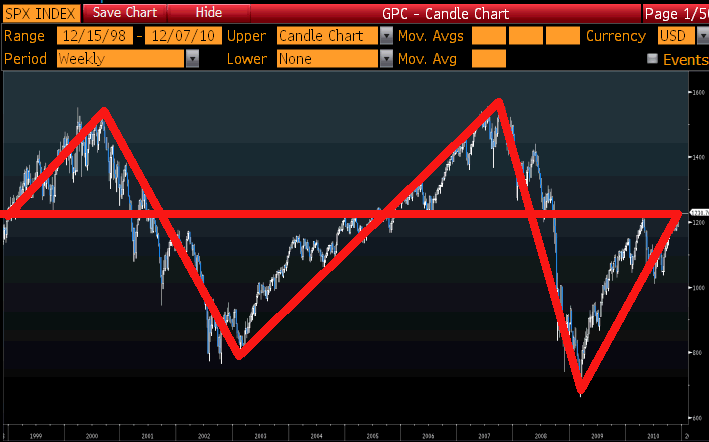>
The chart above shows 12 years of the S&P500.
On December 31, 1998, the last trading day of the year, the SPX closed at 1229.23. That is within 10 points (not 10 percent, but 10 points!) of where it is today.
Over the course of these dozen years, we have seen a 68% rally (to the 2000 top), a 50% sell off (March ’03 lows), a 104% rally (October ’07 top), a 58% drop (March ’09), and an 83% move up (April 2010 highs).
The fee-driven industry continues to push buy & hold as the investing strategy of choice. I prefer to adjust my risk exposure relative to multiple inputs, one of the major aspects of which is Trend.
Of course, some academics will argue this point, but the chart above speaks volumes.
And the chart above is in nominal terms — 12 years of flat returns does not take into account inflation. Perhaps that is what dividends are for: To convert nominal performance of holdings into real after inflation numbers of Buy& Hold investors.



What's been said:
Discussions found on the web: